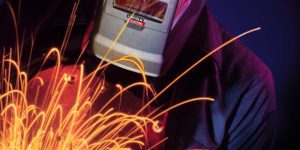September 2011
Ed Zitney of SKF Machine Tool Services explains why understanding how a particular machine tool spindle design will benefit an application can provide a big assist in helping to realize its ideal operation and performance consistent with the job at hand.
The Piercing Process: Bob Pugliese of Trumpf shares some tricks of the trade for creating smaller holes in thicker steel plate using a laser.
By questioning the value and return on investment of departments, organizations are certain to eliminate redundant efforts between quality, lean, and safety groups. In Part 5 of our series on Back to Basics in Safety, Phil La Duke of Rockford Greene explores the shared role between continuous improvement, lean principles, and safety.
There are various material conditions unique to coil stock that can harm the profitability of today’s metal stamper. Jim Ward of COE Press Equipment explains why understanding each of these potential issues and how to avoid or deal with them will help keep your metal stamping operations at their best.
Mini ERP: Midland Metal Products, a Chicago manufacturer of retail displays, overtakes global competitors by using automated laser-cutting, forming and material handling systems from Cincinnati Incorporated that can churn out 35 prototypes per week, all while meeting daily JIT production schedules.
It all began with two four-slide machines for springforming. But how does seemingly traditional Dudek & Bock Spring Manufacturing, operating inside an urban metropolitan city, sustain its leadership role in the world market after 65 years in business?
Recent activities and events going on in the business of fabricating and metalworking.
People making recent headlines in the business of fabricating and metalworking.
Fabricators must continue to streamline their processes to reduce costs and improve profit margins. Here are some combination systems from Amada America, Flow International, Behringer Saws and LVD Strippit that can help consolidate processes, improve precision and speed, and compete profitably in new markets.
Plug and Play: Working in tandem with a stamping press and properly tooled die, the portable PEMSERTER® In-Die Fastener Feeding System from PennEngineering® eliminates secondary operations typically required for fastener insertions and can easily be moved from press to press as needed on the shop floor.
The Piercing Process: Bob Pugliese of Trumpf shares some tricks of the trade for creating smaller holes in thicker steel plate using a laser.
Attention Contract Manufacturers: This recent Design-2-Part survey reports that OEMs plan to outsource more projects/purchases in the next 12 months and, guess what, it’s not “price” or “quick delivery” that they’re looking for.
On A Roll: To melt and roll 90 tons of steel an hour, this Gerdau Ameristeel mini-mill uses an advanced KepServerEX manufacturing execution system from Kepware Technologies that effectively manages the myriad of diverse PLCs distributed throughout its rolling and melting mills.
Although the gloom and doom brigade has been out in force in recent weeks and the markets now reflect a new sense of impending doom, this slowdown is only temporary and not the start of another breakdown in the economy. Manufacturing economist Chris Kuehl of FMA explains why.
Changes in demand require adaptations. As material technologies improve, so must machine, tooling and coolant technologies. Mark Larson of Makino shows why and how titanium is yet another example of an exemplary material that requires a new machining approach for manufacturers to be profitable.
Attention Operators: Today’s advanced CNC can look and feel the same way, whether on grinders, milling machines, lathes or another machine tool, and also on press brakes, lasers, welding systems and other fabrication equipment . . . get the picture? Randy Pearson of Siemens Industry explains how and why.
The machine tool business remains strong, but AMT – The Association For Manufacturing Technology and the American Machine Tool Distributors’ Association both view the rest of the year with cautious optimism, given the weakness in parts of the economy and the Dow’s recent plunge.
Bankers and finance executives in the Equipment Leasing & Finance Foundation report that confidence in the U.S. economy and the capital markets – which drives more consumer goods, equipment and durables, and investments – remains strong for the next four months. But an underlying uncertainty is the reason that forecasts remain guarded.
Moving On Up: In this uncertain economy, increasing or upgrading that equipment is an expense and risk that many decision makers are avoiding. However, with low interest rates and numerous incentives, David Malone of Community Bank explains why this may be the best opportunity ever to finance equipment for your business and gain that competitive edge you need.
This eye-opening case study explores how Arizona handrail fabricator Hot Az Hell Welding and Fabrication put their welding guns from Bernard to extreme tests during an upgrade from stick to the flux-cored process.
Fabricators often need to weld out-of-position when working with large/heavy weldments and with pipe, which requires adjusting the electrode angle, puddle manipulation, body position and equipment settings. The first in this two-part series by Ken Alrick of Thermadyne takes beginning TIG knowledge to an intermediate/advanced level by comparing right and wrong methods of making these adjustments.
Keith Packard and Derick Railling of Hobart Brothers explain how making the change to a tubular wire for out-of-position pipe welding applications can yield significant productivity gains. They also show how to ensure that the chosen wires best match the base material for the application and how to prevent an already difficult task from becoming more so.
To emphasize the importance of the effects of welding heat input and cooling rate on weld mechanical properties, Regis Geisler of Lincoln Electric analyzes another application where a one percent nickel electrode was successfully implemented in a welding application.
Here are several important tricks that will maintain 50 percent austenite and 50 percent ferrite microstructure in the base metal, HAZ, and the weld metal.
Ed Zitney of SKF Machine Tool Services explains why understanding how a particular machine tool spindle design will benefit an application can provide a big assist in helping to realize its ideal operation and performance consistent with the job at hand.
By questioning the value and return on investment of departments, organizations are certain to eliminate redundant efforts between quality, lean, and safety groups. In Part 5 of our series on Back to Basics in Safety, Phil La Duke of Rockford Greene explores the shared role between continuous improvement, lean principles, and safety.
Talk about a competitive edge. SolidCAM CAD/CAM software enables Alcon Components to perform continuous 5-axis machining on more complex 3D surfaces, produce more of a part in one operation, and convert design ideas into functional metal components more rapidly than ever before.
Plug and Play: Working in tandem with a stamping press and properly tooled die, the portable PEMSERTER® In-Die Fastener Feeding System from PennEngineering® eliminates secondary operations typically required for fastener insertions and can easily be moved from press to press as needed on the shop floor.
Rare Breed: Tube and pipe bending shops must rethink their processes to improve accuracies and meet tighter tolerances at lower costs. Cathy Hayat of Hexagon Metrology explains how measurement technology designed specifically for these applications will not only increase their productivity and precision, but also dramatically reduce their scrap rates and lower their costs.
Mike Riley presents a simple model from industrial metrology supplier Renishaw Inc. that explains the sources of process non-conformance and the process control methods to address them – something manufacturers will need if and when times get tough.





